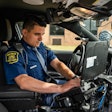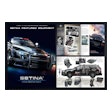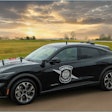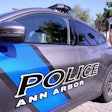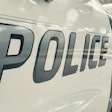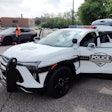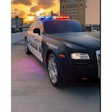According to the Law Enforcement Bicycle Association, the use of mountain bikes as police tools began in 1987 in Seattle, just a few years after the fat-tired bicycles started gaining general popularity, and their effect was both immediate and dramatic.
With construction in downtown Seattle hampering automotive traffic (including patrol cars), crime took a turn for the worse despite increased foot patrols. That led Officer Paul Grady to examine the scene literally from above; his rooftop surveillance showed that wherever foot patrol officers went, criminals tended to slip away around the block.
After pondering how to solve this dilemma, Grady thought, “Mountain bikes!” After securing four new bikes donated by Raleigh Bicycles, the Seattle Police Department bicycle patrol unit was born with Officers Grady and Mike Miller taking to the streets on July 10, 1987.
In their first 30 minutes of patrol, the pair reportedly made three felony narcotics arrests. Their first month, they made 500 misdemeanor arrests, which was five times the average for foot patrols.
Clearly, the Seattle Police Department’s bicycle patrol unit ushered in a new era of policing.
Today, more and more departments all over the world are adding bicycles to their arsenal of tools. Like any new tool or method, of course, barriers must be torn down. In the case of bicycles, the old attitude is one of the biggest hurdles to overcome when starting a bike patrol unit.
Officer Donna Tuk, the bicycle coordinator for the Los Angeles Police Department, says it’s not just the public that often dismisses bicycle patrols as silly.
“The older managers think, ‘What a joke. Bike patrol officers just want to have fun.’ Until they really start to look at it,” Tuk says. She believes the public, many officers, and whole departments, might be surprised at how effective policing by bike can be.
“A bicycle patrol officer is very quiet, stealthy. I can’t tell you how many times when I worked bike patrol that we’d be up on top of a crime before those criminals realized it. Even with the rear hub on the bicycle clicking as it goes along, they still never realized it was a cop approaching,” says Tuk.
LAPD officers on bicycle patrol write more tickets than those in cars, according to Tuk, because they get the chance to build relationships with people and can more easily keep an eye on what’s going on.
“Everybody feels that they can approach a bike cop, and they can communicate better. When you’re in a car, you don’t have time to stop—you’re usually running from one call to another. When you’re on foot, you just don’t get the miles in; you’re limited to those blocks you’re walking. But on a bicycle, everybody wants to be friendly with you.”
Because of this, bicycle patrols are good community-policing tools. They’re also very inexpensive when compared to the costs of maintaining cars and motorcycles.
If you need no further convincing but aren’t sure of how to go about getting a bike patrol unit started at your agency, follow along as we examine how several different departments did it. Perhaps you’ll be able to glean the appropriate methods that are right for your particular situation and join the growing ranks of agencies that have bike units.
The LAPD Way
When the Los Angeles Police Department began to consider a formal bike patrol unit, it pulled a few bicycles out of the confiscated/lost-and-found locker. At first, the department used road bikes—the ubiquitous 10-speed—and quickly determined they weren’t suitable for patrol use, especially at the beach. That led to trying beach cruisers, which were more comfortable with their bigger tires and more relaxed riding position. However, being single-speed bicycles made them considerably more difficult to use. About that time mountain bikes were beginning to grow in popularity, so they were the next step. Still, there was no formal bike patrol unit.
Tapping Resources
Starting any unit requires equipment, training, and equipment maintenance. With limited monetary resources, creativity is often necessary to get the ball rolling, even for large departments.
“To get the program off [the ground] we went to the community and got donations,” Tuk explains. “A lot of the business people and others in the Los Angeles community wanted a bike patrol because they saw it as a nice way for them to relate to us and us to relate to them. So they supported us by donating bicycles.”
For no-cost maintenance, many bike shops around the city donated their time to fix fleet bicycles. But officers also often fixed them themselves.
Tuk remembers that when she started in the bike detail around 1995, “If you didn’t get a donated bike, you bought a bike, and you paid for your tubes and your tires and your maintenance and whatever else because we just didn’t have any money.”
The bike donations LAPD received allowed the bicycle patrol to start. But it also created a mish-mosh collection of a bike fleet with no monetary support.
That situation, however, didn’t last long, thanks to grants.
When Tuk took over the LAPD bicycle unit in 1998, she started working very closely with the Environmental Affairs department and the Air Quality Management District (AQMD). Because bicycles are considered environmentally friendly forms of transportation, these organizations promote their use through grants.
“For an agency starting out, small or large, your biggest benefit is to hook up with them because they provide grants to bicycle units. The first grant we received from them involved 135 bicycles, which replaced almost all of our donated fleet. This is one way that agencies can get money.”
Tuk has found that putting cops on bicycles provides another benefit: health.
“Our sickness rate and injury rate is much lower among bike cops,” she says. This makes officers happier and keeps them on the streets and out of hospitals, which is extremely cost effective.
Maintaining a Fleet
After procuring the bikes, you’ll need to establish a system for maintenance and repairs. After all, the two-wheeled equivalents of patrol cars blaze through maintenance cycles at a greatly accelerated rate. The lifespan of a police bike typically averages two to four years, Tuk estimates.
“Through asset forfeiture we were able to get some money to use in our budget to buy bicycles—we have a rather large bike fleet here at LAPD (averaging 180 officers in winter to 300 in summer)—buy repair items, buy grease and lube, stuff like that, and safety equipment. Back in the old days, we bought our own helmets, [sun]glasses, and gloves, and now the unit provides them.”
When it comes to maintaining its fleet, instead of having an in-house team of dedicated bike mechanics, LAPD outsources much of the work to bicycle shops around the city. Each division does have its own set of tools, work rack, and some spare parts so that minor things like replacing punctured tubes, bent wheels, worn out brake pads, or other simple tasks, can be handled quickly in-house.
But there’s still plenty of work for the contracted independent bike shops who, of course, stay up to date with the latest bikes, parts, and accessories. It is, after all, their job.
And, as Tuk points out, “For liability’s sake, you want to have people who are certified bike mechanics. If someone gets injured after a bike’s repaired by untrained personnel, you leave the city wide open to lawsuits.”
Joining the Ranks
When it comes to recruiting officers for bike patrol, improvements have been made over the years. A combination of volunteers and “appointments” brought people on the unit in the early days. Now, “bicycle patrol” is a position that’s actually coveted among some patrol officers.
Once accepted, officers must successfully go through the LAPD’s bicycle training school before they’re qualified to ride patrol. Each of the LAPD’s 18 divisions, plus special units such as bike patrol for Los Angeles International Airport, have an average of six to eight officers that ride. And they’re not rookies stuck with the detail.
“Usually, applicants are officers that have two or three years on [duty], have done patrol in the black-and-white, maybe even worked a foot beat here and there,” Tuk says. “[They’re usually] experienced officers that go out and try bike patrol.”[PAGEBREAK]
Like any other unit within the agency, LAPD’s Bicycle Coordination Unit has implemented procedures and regulations in addition to training.
“You have to have a form of rules,” Tuk insists, “so we started a bicycle manual, which is still in the works [eight years later] because it’s just a living document. What we do helps the smaller agencies [who are investigating how to start a bike patrol unit]."
Tuk wrote the unit’s own rules, regulations, policies, and procedures for bicycle officers by working with other agencies. The unit shared notes with the Seattle Police Department, the Sacramento County (Calif.) Sheriff’s Office, and the Los Angeles County Sheriff’s Department, all of which were developing bike patrols at the same time.
Training
Acquiring the special skills necessary to ride a bicycle on patrol—which can be difficult when talking on a handheld radio—is essential to having an effective bicycle patrol unit. The LAPD has found that as a big agency it makes more sense to run its own training school.
The department’s bicycle patrol unit finances the in-house training for the five-day-long basic bike school that LAPD runs approximately every other month. It also holds advanced training classes for officers who want to improve their skills.
Because of its size, LAPD has the resources to fund and run its own school. But it shares its expertise by offering training to other agencies in Southern California, as well as agencies in other countries.
“A lot of the very small agencies depend on the larger agencies to provide their training,” Tuk says. “Probably the cheapest route is to piggyback on a larger agency.”
But the International Police Mountain Bike Association (IPMBA) also trains a multitude of agencies. This world-wide organization provides training at its conference each year for a fee.
On a Smaller Scale
Det. Josh Birrell of the Barrington (R.I.) Police Department isn’t alone when he says that his department’s biggest hurdle in starting a bicycle patrol unit was financing.
“It was still a pretty new concept when we started in 1998, so we had to present it to our administration as a no-cost alternative to patrol,” Birrell says.
The department began and survived on donations for the first couple of years until it could convince the administration that it was worth funding.
“We [literally] had no budget. We had the [initial] training site donated, and we hosted the training so we were able to get four [of our own] officers trained for free. The bikes we had were donated, thanks to Barrington’s Police Athletic League fund-raising efforts,” says Birrell.
Officers put up much of the money for the day-to-day needs of their unit, and donated some of their time for free.
“At the time, officers were only allowed to ride while they were on duty; there wasn’t any overtime to ride,” Birrell says. “All the officers ended up buying their own dedicated bike patrol uniforms.”
After about two years of scrounging for supplies, the labor of love paid off when the department decided to fund its bicycle unit.
Nowadays, BPD boasts 10 officers who count bike patrol as an added duty. “It’s all overtime, for the most part, so it doesn’t affect the staffing levels of our patrols,” Birrell explains. “They’re not assigned out of uniformed patrol and onto the bike patrol; it’s actually in addition to all the regular patrols we do.”
Summertime, holidays, and weekends require the most bike patrol time, as you might expect. “[Other] days, it’s pretty much at the discretion of the officer,” Birrell says. “If there’s something particular going on—if we’re having a problem in a certain area—we can deploy someone there every day. It kind of fluctuates, but it’s primarily weekends and weekend nights [when we deploy]. It’s not year-round.”
That’s not the case in areas with more temperate or even hot, humid climates, of course. Pasadena, Texas, features a six-bike Bicycle Patrol Program, started in 1997, that rides year-round with a couple dozen officers certified for duty, although only a few are actually on bikes at any one time. Like many agencies, especially smaller and even mid-sized ones, Pasadena also has officers doing double duty, generally pulling overtime on bikes after fulfilling regular patrol responsibilities.
“The way we did it was you would work regular patrol, but sometimes you’d do it on a bicycle,” Pasadena PD’s Sgt. Robert Cissell says. “You’d still make your house calls like everybody else, but you’d have a smaller district. The way we do it now is we allow the bike [officers] to do a lot of overtime for different functions.”
Currently, Pasadena PD is in the midst of a restructuring that at one time threatened the bike unit’s existence.
Cissell explains, “I didn’t want the [unit] to disappear so I asked if I could be in charge of them to make sure the inventory stays correct and that we can still do different functions and still have bicycles and get more guys trained on them. I would really feel comfortable with about 20 to 30 bicycles.”
Fortunately, Cissell says the department’s chief is sympathetic to the Bicycle Patrol Program. “He understands that we are a good public-relations tool, but we’re also effective in patrolling.”
Today, funding is a combination of police budget and donations from the community, which includes oil companies and the bicycle club at NASA. The same goes for bike fleet maintenance. Two officers have undergone bicycle mechanic training. But if a problem is similar to a warranty-related issue like a cracked frame, it gets farmed out to a local bicycle shop.
“We have a bicycle shop here in town that loves us to death,” Cissell notes. “I’ve already bought six bicycles from them [for the department], and I refer people to this shop all the time—not just policemen but a lot of people.”
But the community as a whole is the real beneficiary of Pasadena’s Bicycle Patrol Program, if for no other reason than it reduces crime. For example, Cissell says, at one particular apartment complex the unit concentrated on, “We were catching burglars—we were catching car burglars, car thieves, and we were making a lot of dope arrests because [criminals] are not looking for a policeman on a bicycle. They’re looking for a policeman in a car. I rolled up on one day shift in broad daylight on six guys stripping a stolen vehicle.”
And the dark of night does nothing to diminish that effectiveness; if anything, Cissell observes, bicycle officers are even more useful at night when it comes to crime-fighting. Like other police vehicles, the bicycles have bright headlights—smaller in scale than those on patrol cars, of course, and easily removable—and red and blue flashing lights, as well as official police graphics and lettering.
In the experience of the Bryan (Ohio) Police Department, its bike patrol unit, formed in 2001, is most effective at night. “Our biggest run time is in the evening hours,” Bryan Patrolman Jeremy Viers notes. “As far as second and third shift, we get a lot of activity.”
When it comes to staffing, smaller towns must often juggle assignments, of course. For its town of 9,000, the Bryan PD generally deploys three patrol officers per shift, although only one is assigned to patrol on bike. “If we have less than three, then we don’t utilize the bike,” Viers says. A small agency, therefore, simply might not have enough manpower to field a bike patrol detail, he feels.
After obtaining grants and other community donations, as well as a small budget from the department, Viers set up Bryan’s bike patrol after consulting other agencies and organizations. “We tried to learn from their mistakes before we bought,” he says. “We went with good equipment, and I’m glad we did.”
If you’re interested in starting up your department’s own bicycle patrol unit, it’s a good idea to contact other agencies in your area, or even around the country. But you might also want to contact the IPMBA, an organization that does more than just conduct training and conferences. It also offers a wealth of information on starting up a bike patrol unit. Interested agencies can request the free “IPMBA Police Bike Unit Start-up Information Packet” as well as other reference materials that should prove helpful for those getting off the ground.
While bike patrol units aren’t the complete answer to every police agency’s needs, they do offer such value that every agency should at least investigate the feasibility of incorporating such a tool into its arsenal.
Police Bicycle Gear
Giant Bicycles
www.giant-bicycle.com
Jandd Mountaineering
www.jandd.com
Mocean
www.mocean.net
NiteRider Lighting Systems
www.niterider.com
Raleigh Bicycles
www.raleighusa.com
Shimano American
www.shimano.com
Mark Kariya is a Los Angeles-based freelance writer who reviews bicycles, as well as motorcycles and automobiles.









